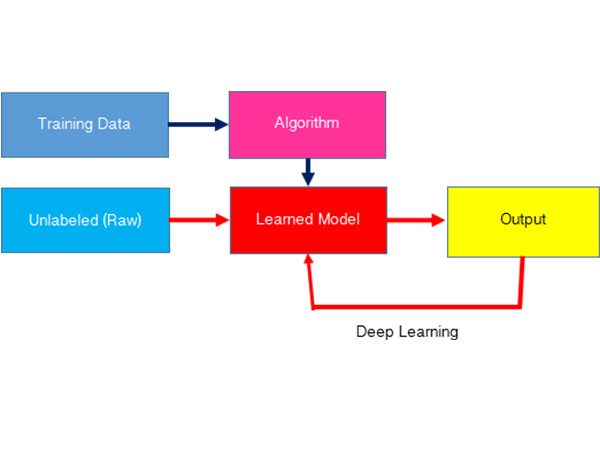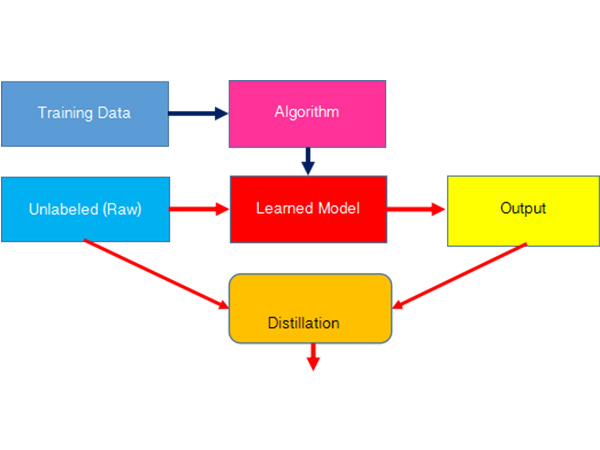Can IP Laws keep up with the Advancement of AI Technology Development?
Nobuhide otomo, Ph.D. 大友信秀
Professor of law, Kanazawa University, Japan
1. What is AI?
AI (Artificial Intelligence) is known as a computer system demonstrates similar performances to human intelligence. AIs already showed exceeding performances of human beings in certain area, i.e. playing chess, shogi and go. Some people says AIs will replace humans. AIs have already been used in many companies and entities, i.e. Amazon’s Alexa, Apple’s Siri, Autonomous Car, Cancer Cell Detection and so on.
Before full-scale of AI technology is deployed, we should understand AI accurately and prepare from now on how to associate with AI in the human society. For this purpose, this paper analyze AI from the following three points:
Components of AI;
Comparison with existing similar things;
Availability of a legal system that would be relevant to AI protection.
2. Components of AI
When we focusing on the characteristic of software, AI is made up of a set of an instruction (or algorithm) that processes data, a conceivable data set and a self-learning system (to learn by trial and error)which continues to be modified and developed using output of an instruction (The learned model continue to be changed and not to stay as the same thing.). The self-learning system is also called deep-learning.
Theory of deep-learning has already been introduced to public at latest in early 1990’s. And it has been put to practical use. Deep-learning is based on a system imitating the structure of human neurons. By using the neural network in multiple layers, the computer itself can learn the features contained in the data in a step-by-step manner.
Deep learning requires a large amount of labeled data. By learning a large amount of data on its own, AI can improve processing accuracy. Also, because of this large amount of data processing, advanced computer processing power is required for deep learning.
As a processing device of a computer, CPU (Central Processing Unit)s have been used as brains of computers performing the basic arithmetic, logical, control and input/output operations specified by the instructions of computer programs.
GPU (Graphics Processing Unit) known as Graphics Card to accelerate computational workloads, specialized to render 2D and 3D graphics together with a CPU was invented to process huge volumes of data which is hard to do by CPU. GPUs are performing the same operation such as graphics processing over and over very quickly, unlike CPUs which are working for many kinds of tasks. Furthermore, Google made TPU (Tensor Processing Unit) developed specifically for machine learning and tailored for Tensor Flow, open-source machine learning framework. TPU focuses to reduce a consumption of the amount of electricity and enhancing speed of the algorithm rather than raising an accuracy, As the evolution of processors shows, AI is not only the matter of software but also of hardware.
3. Comparison with existing similar things
IoT (Internet of Things) is also paid attention like AI as a new wave of industrial development. Unlike AI which is intangible and performing as programs, IoT needs tangible things constitute networks. Each things connected to networks must have sensors or sensing devices. They are easily recognizable by eyes and so able to be reverse engineered.
In order to develop IoT, two problems, such as securing incentives for new development and proceeding standardization to enable broadening network formation, must be solved. To deal with this problem the strategy to disclose technologies and to protect them by patent is effective. There standardization work and treatment of standard essencial patent occur, same as the experience of the telecommunications standard for mobile devices.
On the other hand AI is different from IoT in two points, i.e. except Processor AI is intangible and difficult to be identified as object to be protected as it is evolved or changed by deep-learning. To protect AI, therefore, copyright and trade secret protection rather than patent protection are suitable.
AI, as we have already seen, is hybrid of:
software- an information processing technique aimed at doing complicated processing like a human being;
training data- enabling deep-learning;
hardware- processor customized for AI.
To the characteristic of software the discussions on whether a calculation method itself will have a protection by a copyright will be applied. To the characteristic of data the discussions on how to protect data by laws and orders. In addition to them, how to accelerate development of processors for AI must be considered.
4. What is Core of AI?
In understanding the hybrid structure of AI as described above, in order to find better way of protection, it is important to find out what characteristic or part is the core of AI. Functions of each characteristic (or component) and roles for the whole AI must be well understood.
Let’s see the structure of AI next.
Structure of AI

The purpose of developing AIs is to enable complex information processing. Though sometimes Training Data is focused and evaluated as core of AI, in order to upgrade accuracy of processing steps, developing Algorithm, Training Data and Processor are all important and necessary.
5. How to protect each component of AI and AI whole
In order to develop AIs, legal systems to protect them are necessary. At the same time measures to eliminate interferences by over-protections should be found to promote the development of AIs.
If it is a matter of how to protect each components of a AI, we can find solutions from our experience towards the future. However, there are two specific problems left to be described as below. One is that the learned model continue to be changed and not to stay as the same thing. And the other is dealing with Distillation.
6. Two problems we must go over
6.1 The learned model continue to be changed and not to stay as the same thing.
As the learned model continue to be changed and not to stay as the same thing, the rights related to the original model cannot work for the derived form accompanying use. Usage conditions of the original model, and rights attributed to those derived from the original model are not problems be manageable by copyright law but by contract law. However third parties are urged to deal with each version not concerned with the original version. The fact that the attribution of rights is unclear and that the scope of permission based on it is unclear may impede the use of AI.
6.2 How to deal with Distillation
A lot of progress have been achieved to compress and accelerate deep neural networks including deep-learning. Distillation also called as knowledge distillation is one of them. Distillation is a method to train a compact deep learning model to reproduce the output of a larger deep learning model. So that, distillation will circumvent the requirement of computationally expensive high-speed arithmetic processing, and enable to operate with inexpensive low memory resources. Though it is cumbersome and too computationally expensive, to improve the performance of deep learning is to train many different models on the same data and to average their predictions. Distillation uses the input data for a lager model (teacher) and output of it (labeled data). Distillation model (student) will learn from labeled data instead of unlabeled (raw) data directly. In distillation, knowledge is transferred from the teacher to the student by minimizing a loss function in which the target is the distribution of class probabilities predicted by the teacher. The student, thus, acquires the same abilities as the teacher.
The structure of Distillation

The problem is that we cannot find out no evidence of any model used as a teacher. In order to advance the open strategy which is considered to accelerate the speed of development of AI technology, technical countermeasures or legal systems to prevent it are needed to be introduced.
7. Conclusion
As above we have to go over the two specific problems. In addition to it, we also have to deal with traditional types of problems, i.e., to keep balance with protection by legal rights and elimination of overprotection in business. For that purpose, efforts to keep accurate understanding of AI's technical aspect and its application range in industries are necessary.
click here for the references
Photo from: 6199pic.com









